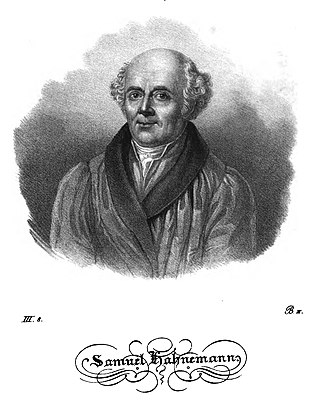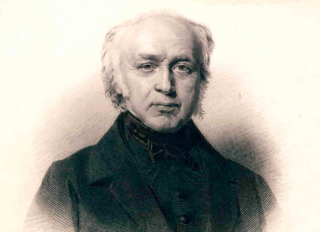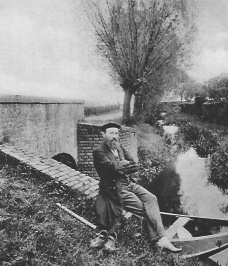Related Research Articles
Alternative medicine is any practice that aims to achieve the healing effects of medicine despite lacking biological plausibility, testability, repeatability or evidence of effectiveness. Unlike modern medicine, which employs the scientific method to test plausible therapies by way of responsible and ethical clinical trials, producing repeatable evidence of either effect or of no effect, alternative therapies reside outside of medical science and do not originate from using the scientific method, but instead rely on testimonials, anecdotes, religion, tradition, superstition, belief in supernatural "energies", pseudoscience, errors in reasoning, propaganda, fraud, or other unscientific sources. Frequently used terms for relevant practices are New Age medicine, pseudo-medicine, unorthodox medicine, holistic medicine, fringe medicine, and unconventional medicine, with little distinction from quackery.

Homeopathy or homoeopathy is a pseudoscientific system of alternative medicine. It was conceived in 1796 by the German physician Samuel Hahnemann. Its practitioners, called homeopaths or homeopathic physicians, believe that a substance that causes symptoms of a disease in healthy people can cure similar symptoms in sick people; this doctrine is called similia similibus curentur, or "like cures like". Homeopathic preparations are termed remedies and are made using homeopathic dilution. In this process, the selected substance is repeatedly diluted until the final product is chemically indistinguishable from the diluent. Often not even a single molecule of the original substance can be expected to remain in the product. Between each dilution homeopaths may hit and/or shake the product, claiming this makes the diluent "remember" the original substance after its removal. Practitioners claim that such preparations, upon oral intake, can treat or cure disease.

Christian Friedrich Samuel Hahnemann was a German physician, best known for creating the pseudoscientific system of alternative medicine called homeopathy.

James Tyler Kent (1849–1916) was an American physician best remembered as a forefather of modern homeopathy. In 1897 Kent published a massive guidebook on human physical and mental disease symptoms and their associated homeopathic preparations entitled Repertory of the Homeopathic Materia Medica, which has been translated into a number of languages. It has been the blueprint to many modern repertories used throughout the world and even remains in use by some homeopathic practitioners today.

Quackery, often synonymous with health fraud, is the promotion of fraudulent or ignorant medical practices. A quack is a "fraudulent or ignorant pretender to medical skill" or "a person who pretends, professionally or publicly, to have skill, knowledge, qualification or credentials they do not possess; a charlatan or snake oil salesman". The term quack is a clipped form of the archaic term quacksalver, from Dutch: kwakzalver a "hawker of salve". In the Middle Ages the term quack meant "shouting". The quacksalvers sold their wares at markets by shouting to gain attention.

Allopathic medicine, or allopathy, is an archaic and derogatory label originally used by 19th-century homeopaths to describe heroic medicine, the precursor of modern evidence-based medicine. There are regional variations in usage of the term. In the United States, the term is sometimes used to contrast with osteopathic medicine, especially in the field of medical education. In India, the term is used to distinguish conventional modern medicine from Siddha medicine, Ayurveda, homeopathy, Unani and other alternative and traditional medicine traditions, especially when comparing treatments and drugs.
Anthroposophic medicine is a form of alternative medicine based on pseudoscientific and occult notions. Devised in the 1920s by Rudolf Steiner (1861–1925) in conjunction with Ita Wegman (1876–1943), anthroposophical medicine draws on Steiner's spiritual philosophy, which he called anthroposophy. Practitioners employ a variety of treatment techniques based upon anthroposophic precepts, including massage, exercise, counselling, and substances.

Ita Wegman co-founded Anthroposophical Medicine with Rudolf Steiner. In 1921, she founded the first anthroposophical medical clinic in Arlesheim, known until 2014 as the Ita Wegman Clinic. She also developed a special form of massage therapy, called rhythmical massage, and other self-claimed therapeutic treatments.

Organon of the Art of Healing by Samuel Hahnemann, 1810, laid out the doctrine of his ideas of homoeopathy. The work was repeatedly revised by Hahnemann and published in six editions, with the name changed from the second onwards to Organon of Medicine, and has been so since the mid-19th century.

Clemens Maria Franz (Friedrich) Freiherr (Baron) von Bönninghausen was a lawyer, Dutch and Prussian civil servant, agriculturalist, botanist, physician and pioneer in the field of homeopathy.

Frederick K. Humphreys was an American physician and the founder of Humphreys Homeopathic Medicine Company in New York City in 1853.
Eli Jones (1850–1933) was an American medical doctor who claimed to be able to treat cancer.

Homeopathy is fairly common in some countries while being uncommon in others. In some countries, there are no specific legal regulations concerning the use of homeopathy, while in others, licenses or degrees in conventional medicine from accredited universities are required.

Wilhelm Heinrich Schüßler — also spelled Schuessler, particularly in English-language publications — was a German medical doctor in Oldenburg who searched for natural remedies and published the results of his experiments in a German homeopathic journal in March 1873, leading to a list of 12 so-called "biochemic cell salts" that remain popular in alternative medicine. Although he was firmly within the homeopathy movement of his day, the modern definition of homeopathy tends to exclude his concept of homeopathic potency, which favoured remedies which, while very dilute, still retained small amounts of the original salt.

The Protestant pastor Leopold Erdmann Emanuel Felke was a naturopath who developed the eponymous Felke cure, and who was active in Repelen near Moers from 1896 to 1914 and in Bad Sobernheim from 1915 to 1925. He also practiced iris diagnosis (iridology) and is considered the co-father of combination homeopathic remedies.

Arthur Lutze, was a major figure in medicine and regimen in Germany because of his establishment of a major homeopathic clinic and spa in Köthen, Germany in the mid-1800s. He was also known for his advancement of a particular approach in the use of homeopathic medicines, known as dual remedy prescribing, after it was ostensibly dropped by others, including Samuel Hahnemann, the founder of the homeopathic approach. His decision in 1865 to release a version of the much awaited, but long delayed publication of the last, 6th edition of Hahnemann's Organon der Heilkunst, which included a disputed paragraph created by Hahnemann for the 5th edition, but subsequently withdrawn for political reasons within the homeopathic medical community in Germany, resulted in a strong protest from more conventional homeopaths.

William G. Boericke was an Austrian-born American physician and ardent, influential exponent of homeopathy. He is known in the field today as the compiler and editor of the Pocket Manual of Homeopathic Materia Medica. The ninth edition has endured as his most re-published version partly because of its then final inclusion of a mini-repertory by his brother, Oscar Eugene Boericke, MD, also a homeopathic physician.

Rocchetta Mattei is a fortress located on the Northern Apennine Mountains, on a hill which is 407 meters above sea level, in the locality of Savignano in the municipality of Grizzana Morandi, on the Strada Statale 64 Porrettana, in the Metropolitan City of Bologna.
References
- ↑ Naturopathy and Its Professors (1932)
- ↑ www.italiaplease.it
- ↑ sciper.org
- ↑ Kempf, EJ (1906). "European Medicine: A Résumé of Medical Progress During the Eighteenth and Nineteenth Centuries". Medical Library and Historical Journal. 4 (1): 86–100. PMC 1692573 . PMID 18340908.
- ↑ GW Potter, "Matteism: An Exposure", British Med J , August 13, 1892
- ↑ Baylen, J. O (1969). "The Mattei cancer cure: a Victorian nostrum". Proceedings of the American Philosophical Society. 7 (169): 397. JSTOR 1624730.
- ↑ The Mattei Fable, British Med J Jan 17, 1891
- ↑ Alberto Lodispoto, 'L'Electromiopathie du Comte Cesare Mattei', Zeitschrift für Klassische Homöopathie (English abstract) 1971; 15: 130-135
- ↑ www.cesaremattei.com
- ↑ The Government of India, Ministry of Health and Family Welfare (Research Desk) orders no. R14015/25/96-U&H (R) (Pt.), 25 November 2003